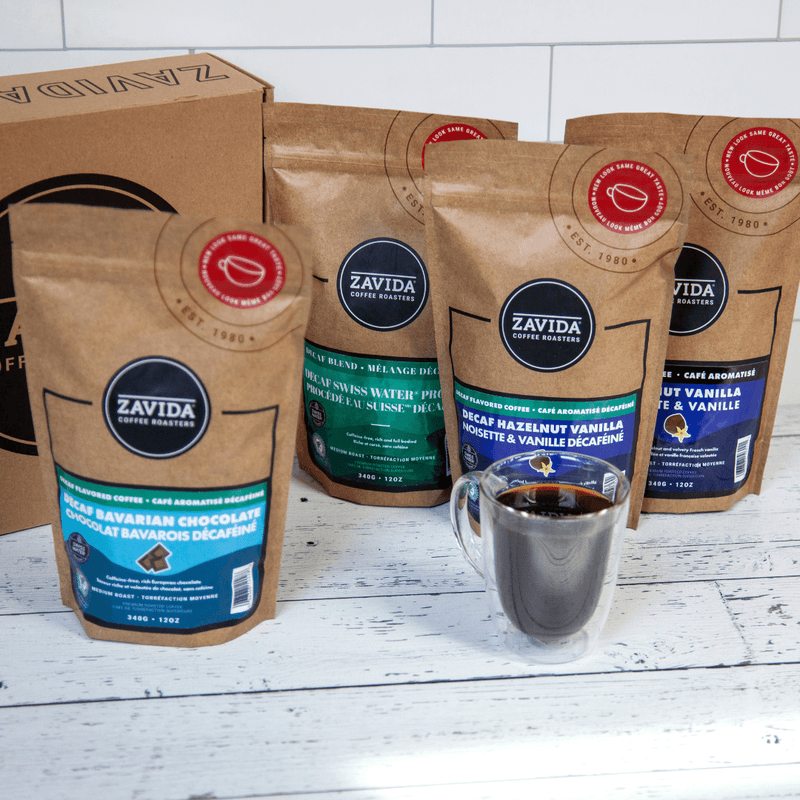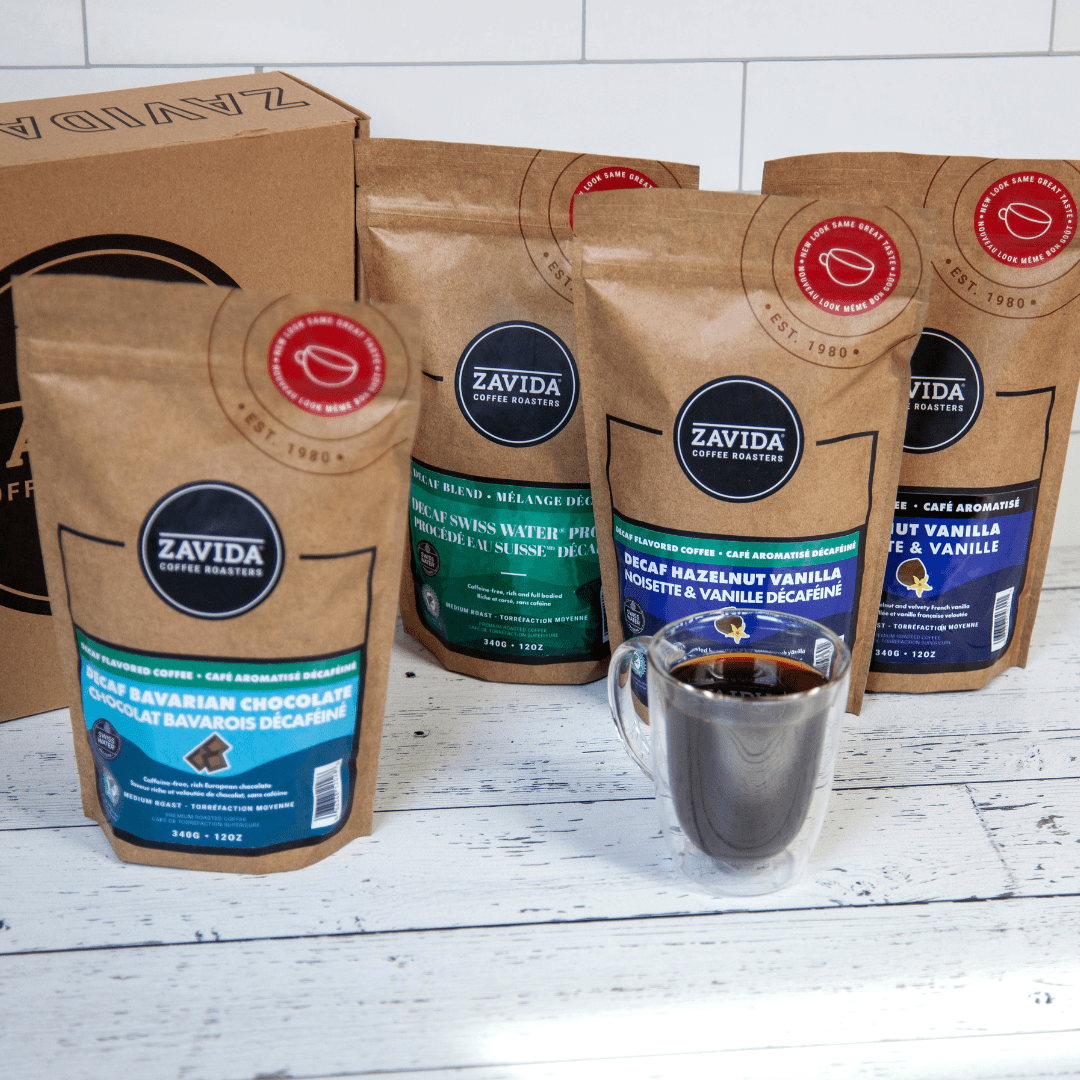A standard coffee pod contains approximately 75-150 mg of caffeine. The exact amount depends on the brand and blend of coffee.
Coffee pods, a popular choice for convenient, quick brewing, provide a consistent caffeine level beneficial for those seeking a reliable energy boost. Typical single-serve coffee pods are designed for Keurig or Nespresso machines and offer a hassle-free way to enjoy a fresh cup of coffee.
The convenient size and pre-measured coffee ground within pods eliminate the guesswork and mess associated with traditional coffee-making methods. Knowing the caffeine content can help coffee enthusiasts manage their intake, ensuring that they can savor their favorite hot beverage without overdoing it. Coffee pods combine efficiency with variety, giving consumers plenty of choices for strength and flavor while keeping a close eye on their caffeine consumption.

The Buzz About Caffeine In Coffee Pods
Wake up and smell the coffee pods! These tiny capsules of energy have revolutionized our morning routines. They promise a fast and fuss-free caffeine kick. But how much caffeine is really in these pods? That’s the buzz we’re unraveling.
Caffeine 101: What Sparks The Buzz
Caffeine acts like a wake-up call for your brain. It blocks the sleepy signals and keeps you alert. Generally found in coffee, this natural stimulant varies in pods.
| Pod Type | Average Caffeine Content |
|---|---|
| Regular | 80-100 mg |
| Espresso | 60-75 mg |
| Light Roast | 90-110 mg |
| Dark Roast | 70-80 mg |
Coffee Pods: Convenience Meets Caffeine
Coffee pods combine speed with your caffeine needs. Just pop one in, press a button, and your coffee is ready. Here’s why they work:
- Pre-measured servings control the caffeine dose.
- They preserve freshness, keeping caffeine consistent.
- Variety of flavors satisfies every taste.
Remember, the caffeine content in coffee pods can impact your sleep and health. Always enjoy in moderation!

Measuring Up: Caffeine Content In Popular Coffee Pods
Coffee pods have revolutionized the morning brew. With a single push of a button, a hot cup of coffee is ready. But, how much caffeine does each little pod pack? It’s a vital question for coffee lovers and busy professionals alike. Let’s dive into the caffeine content of these convenient cups.
Brand By Brand Breakdown
Caffeine levels can vary from brand to brand. Understanding this can help you pick the right kick. Below is a comparison of popular brands.
| Brand | Average Caffeine Content (mg per pod) |
|---|---|
| Nespresso OriginalLine | 60 – 80 mg |
| Keurig K-Cup | 75 – 150 mg |
| Tassimo T-Discs | 30 – 50 mg |
| Dolce Gusto | 50 – 130 mg |
| Illy Iperespresso | 60 – 75 mg |
Factors Influencing Caffeine Levels
Several factors affect caffeine in coffee pods. They are:
- Roast level: Lighter roasts often have more caffeine than darker roasts.
- Type of coffee bean: Robusta beans contain more caffeine than Arabica beans.
- Pod size: Larger pods can hold more coffee, potentially increasing caffeine.
- Extraction process: Brewing time and water temperature can influence caffeine extraction.
Comparing Pods To Traditional Brews
People often wonder about the caffeine content in coffee pods compared to traditional brews. Choosing between coffee pods and a classic cup of coffee involves more than just convenience. It’s also about the caffeine kick. Let’s dive into the specifics and see how they stack up.
A Cup Of Joe: Analyzing The Differences
Coffee pods and traditional brews cater to different tastes and needs. Pods can vary in caffeine content, but standard pods contain roughly 100 milligrams per serving. This is similar to a regular 8-ounce cup of coffee, which on average offers 95 milligrams of caffeine. But the number can range depending on the bean, roast, and brew method.
The Espresso Edge: Pods vs. ShotsThe Espresso Edge: Pods Vs. Shots
When considering espresso, shots generally have more caffeine per ounce, but they come in smaller sizes. An espresso shot may pack about 63 milligrams in a single ounce. Coffee pods designed for espresso might have slightly less, as they can mix caffeine with water to fill a larger volume. Let’s compare them in detail:
| Type | Size | Caffeine Content (approx.) |
|---|---|---|
| Traditional Brew | 8 oz | 95 mg |
| Coffee Pod | 8 oz | 100 mg |
| Espresso Shot | 1 oz | 63 mg |
Coffee enthusiasts seeking a hearty kick may lean towards espresso shots, while those preferring longer sipping sessions might choose traditional brews or pods. Each method presents a unique caffeine experience, tailored to individual preferences and lifestyles.
Health And Energy: Caffeine’s Impacts And Recommendations
Caffeine in coffee pods can affect health and energy levels. Learn about impacts and recommendations to maximize benefits. Get the lowdown on how to balance the energy boosts with health considerations.
Balancing Benefits And Risks
Caffeine is known for its power to kick-start the day and keep alertness high. But it’s crucial to balance that with potential health risks. Consuming coffee pods smartly can provide energy without the downsides.
- Improved focus and concentration
- Possible reduction in risk of certain diseases
- Limits to prevent sleep disruption and anxiety
- Avoiding too much to prevent dependency
Official Guidelines On Caffeine Intake
The FDA provides guidance on safe caffeine consumption. Adults should aim for no more than 400 mg of caffeine daily. Here’s what that looks like with coffee pods:
| Pod Type | Average Caffeine Content | Equivalent Number of Pods |
|---|---|---|
| Regular | 95 mg | 4 pods |
| Espresso | 65 mg | 6 pods |
| Decaf | 2-5 mg | 80+ pods |
Remember, everyone’s tolerance for caffeine is different. Pay attention to your own body signals. Consider lowering intake if you experience side effects.
Brewing Preferences: Tailoring Caffeine Intake With Pods
Coffee pods offer a convenient way to customize your daily caffeine fix. Unlike traditional coffee brewing, which may have varying amounts of caffeine, pods provide a controlled dose. Whether you need a gentle wake-up or a robust energy boost, the right pod makes it easy. Tailoring caffeine intake to personal preferences and lifestyles has never been simpler. Let’s explore how you can choose the right pods to suit your needs.
Choosing The Right Pods For Your Lifestyle
Consider your routine when selecting coffee pods. Different times of the day may warrant varying levels of caffeine. For morning energy, a full-strength pod kick-starts the day. In contrast, an afternoon brew might be lighter to avoid disrupting sleep.
- Morning: Full-strength pods for a lively start
- Afternoon: Medium or light pods for balanced energy
- Evening: Decaf options for relaxation
Customizing Caffeine Consumption
Coffee pods come in a range of caffeine contents. They make it simple to manage daily intake. Using a standard pod usually contains 50 to 150 mg of caffeine. By knowing how much each pod offers, you can plan your consumption.
Coffee pod makers now offer an array of strengths and sizes. Track your response to different caffeine levels to find your best match.
| Pod Type | Caffeine Content (approx.) |
|---|---|
| Regular | 100 mg |
| Strong | 150 mg |
| Light | 50 mg |
| Decaf | 2-5 mg |
Mix and match pod strengths to fit the ebb and flow of your day. This way, you can enjoy a personalized coffee experience that aligns with your lifestyle and wellness goals.

The Future Of Coffee Pods And Caffeine Content
Coffee pods revolutionized the way we enjoy our daily caffeine fix. As we look to the future, the caffeine content in coffee pods continues to be a hot topic. Consumers seek both convenience and customization, prompting innovations that may change our coffee routines forever.
Innovations In Pod Technology
Advancements in coffee pod technology focus on providing enhanced flavor and precise caffeine control. This means new pods might soon include features like:
- Adjustable caffeine levels to suit personal preferences
- Improved pod materials for better taste and sustainability
- Smart pods that interact with machines for a perfect brew
Trends: Consumer Preferences And Market Influence
As tastes and demands evolve, market trends influence caffeine content in coffee pods. Recent trends reveal:
| Trend | Impact on Caffeine Content |
|---|---|
| Health Consciousness | Lower caffeine options and natural energy boosters |
| Customization Craze | Pods with varying caffeine levels to personalize each cup |
| Eco-Awareness | Biodegradable pods that retain caffeine quality |
Manufacturers are listening to consumers and are adjusting caffeine contents in pods. This includes launching new products that cater to individual needs and lifestyle choices.
Frequently Asked Questions For How Much Caffeine In Coffee Pods
How Much Caffeine Is In A Coffee Pod?
A typical coffee pod contains between 75 and 150 mg of caffeine. This varies depending on the brand and type of coffee.
Are Espresso Pods Higher In Caffeine?
Espresso pods generally have more caffeine, averaging about 60-65 mg per serving. Though they are smaller in volume, they are richer in caffeine content per ounce.
Can Decaf Coffee Pods Be Caffeine-free?
Decaf coffee pods are not completely caffeine-free, but they contain a minimal amount. A decaf pod holds about 2-5 mg of caffeine, which is significantly lower than regular pods.
Does Pod Type Affect Caffeine Levels?
Yes, the type of coffee pod can affect caffeine levels. Brands, blends, and roast levels all contribute to the caffeine content in each pod.
Conclusion
Navigating the world of coffee pods doesn’t need to leave you jittery. Remember, caffeine levels vary, often falling between 50 to 200 milligrams. Choosing the right pod is key to tailor your intake. So, enjoy your brew and stay energized; just keep an eye on those caffeine stats.

